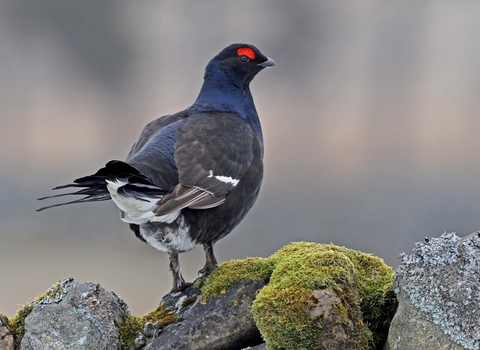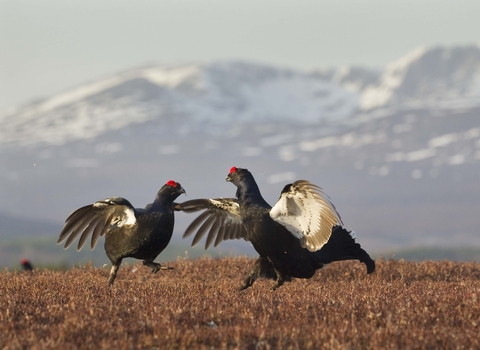
©Margaret Holland

©Mark Hamblin/2020VISION

Black grouse (males at lek) ©Mark Hamblin/2020VISION
Black grouse
The male black grouse, or 'blackcock', is famed for its display behaviour, known as 'lekking'. A sight to behold, it fans out its tail and struts its stuff to show its dominance. Look out for it on upland heathlands.
Scientific name
Tetrao tetrixWhen to see
January to DecemberSpecies information
Statistics
Length: 40-56cmWingspan:72cm
Weight: 900g-1.2kg
Average lifespan: 5 years
Classified in the UK as Red under the Birds of Conservation Concern 5: the Red List for Birds (2021). Priority Species under the UK Post-2010 Biodiversity Framework.
